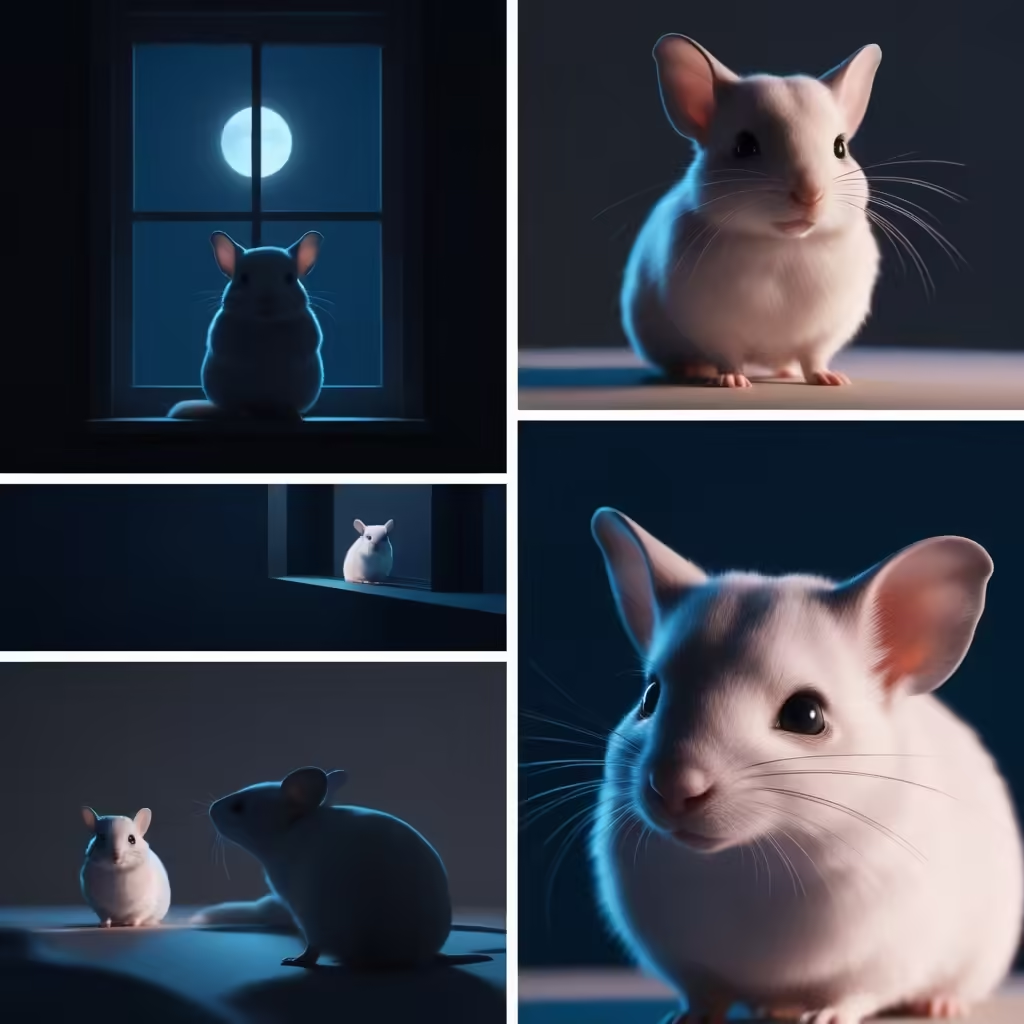Yes, chinchillas can see in low-light environments, but not in complete darkness. As crepuscular animals, they are most active during dawn and dusk when light levels are low. Their vision is adapted for these conditions, allowing them to detect movement and navigate their environment. While they have excellent night vision, they still rely on some ambient light to see clearly. Understanding your chinchilla’s vision is key to creating a safe and enriching environment for your pet.
Key Takeaways
- Chinchillas can see in low light: They have good night vision, but not in complete darkness.
- Crepuscular activity: Chinchillas are most active at dawn and dusk when light levels are low.
- Adapted eyes: Their large eyes, including a reflective tapetum lucidum, help them navigate in dim conditions.
- Nocturnal comparison: While not as adept as owls or cats, chinchillas have better night vision than humans.
- Balanced lighting: Provide soft, dim lighting to mimic natural conditions and avoid bright lights that could stress your chinchilla.
Anatomy of the Chinchilla Eye
Chinchillas have large, expressive eyes that are highly adapted for low-light environments. Their eye anatomy, particularly the presence of the tapetum lucidum, enables them to see well in dim conditions. This reflective layer behind the retina enhances their ability to see by reflecting light back through the retina, allowing their eyes to capture as much light as possible.
General Eye Structure
Chinchilla eyes, like human eyes, have a lens, iris, and retina. However, their eyes are much larger relative to their body size, which gives them superior visual acuity in low-light conditions.
Adaptations for Low-Light Vision
- Large pupils: These can dilate widely, allowing more light into the eye.
- Tapetum lucidum: This reflective layer significantly enhances their ability to see in dim lighting by giving the retina a second chance to absorb light.
These adaptations are crucial for helping chinchillas navigate their rocky, low-light habitats in the wild.

Vision in Darkness
Chinchillas cannot see in total darkness, but they are highly adapted for low-light conditions. Their vision allows them to function well during dawn and dusk, the times when they are most active. However, like most crepuscular animals, they rely on some ambient light to navigate effectively.
Chinchilla Night Vision Capabilities
Chinchillas possess better night vision than humans but are not on the same level as fully nocturnal animals. Their tapetum lucidum reflects light back through the retina, helping them detect movement and shapes in dim light. While this adaptation makes them adept in low-light environments, they still require some level of light to see.
Comparative Analysis with Other Nocturnal Animals
| Animal | Night Vision Capability |
|---|---|
| Chinchilla | Good night vision, adapted for low light |
| Owl | Excellent night vision, can see in near darkness |
| Cat | Very good night vision, can see in low light |
Compared to owls and cats, chinchillas have moderate night vision, well-suited for crepuscular (dawn/dusk) activities but not for total darkness.
Behavior and Environmental Context
A chinchilla’s natural behavior and its environment greatly influence its visual capabilities. Creating the right lighting conditions is crucial to supporting their natural habits and reducing stress.
Nocturnal Behaviors in Chinchillas
Chinchillas are crepuscular, meaning they are most active at dawn and dusk. These twilight hours allow them to avoid predators while taking advantage of their low-light vision. Although not fully nocturnal, they are still highly active in dimly lit conditions.
Impact of Lighting on Chinchilla Well-being
Proper lighting plays an essential role in your chinchilla’s overall well-being. Exposure to excessively bright light can disrupt their natural behavior and stress them, while too little light can impair their ability to navigate. Providing soft, natural lighting that mimics dusk-like conditions is the best way to support their health.
Can Chinchillas See in the Dark?
Chinchillas cannot see in complete darkness, but they are well-adapted to seeing in low-light environments. Their vision allows them to detect movement and navigate in dim conditions, but total darkness impairs their abilities. It’s important to provide your chinchilla with a balanced lighting environment that mimics their natural habitat to ensure their comfort and well-being.
FAQ: Chinchilla Vision
Q: Can chinchillas see in complete darkness?
A: No, chinchillas cannot see in total darkness. They require some level of ambient light to detect movement and navigate their surroundings.
Q: How well can chinchillas see in low light?
A: Chinchillas have good night vision and can see well in low-light conditions, especially during dawn and dusk, thanks to their tapetum lucidum and large pupils.
Q: Are chinchillas nocturnal or crepuscular?
A: Chinchillas are crepuscular, meaning they are most active during dawn and dusk. This behavior helps them avoid predators and take advantage of their low-light vision.
Q: How should I light my chinchilla’s habitat?
A: Provide soft, dim lighting that mimics natural conditions. Avoid exposing your chinchilla to bright lights during the day, and ensure their environment has a period of darkness at night to maintain their natural rhythms.
Q: How do chinchillas’ eyes compare to other nocturnal animals?
A: Chinchillas have good night vision but are not as adapted as fully nocturnal animals like owls or cats, which can see in near darkness. They are more suited to low-light environment.
Citations and Research
- Tapetum lucidum function has been widely studied across various species. A study from the University of Melbourne highlights the role of the tapetum lucidum in enhancing vision in low-light conditions by reflecting light back through the retina (Source 1, Source 2).
- The crepuscular behavior of chinchillas is highlighted in research, including the Wildlife of the Andes study, which examines the activity patterns of chinchillas in low-light environments to avoid predators (Source 1, Source 2).
Conclusion
Chinchillas are well-adapted to low-light environments but cannot see in complete darkness. Their vision helps them navigate dim environments, especially during dawn and dusk when they are most active. As a chinchilla owner, it’s essential to provide a habitat with balanced lighting that mimics their natural environment, ensuring their comfort and overall well-being.
